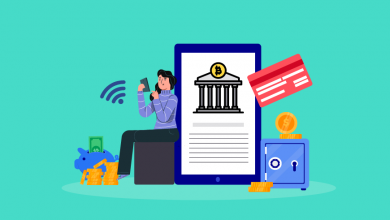Best Practices for Email Marketing Security

Email marketing is one of the most effective ways to connect with your audience and promote your products or services. However, it is also an avenue for cyber attackers to exploit vulnerabilities in your email marketing systems. In this blog, we will discuss some best practices for email marketing security that will help you protect your brand reputation, and customer data, and ensure compliance with data protection regulations.
Table of Contents
Implement Strong Passwords
Strong passwords are the first line of defense against unauthorized access to your email marketing platform. Ensure that you use strong passwords that are unique, complex and not easy to guess. Also, make sure to change your passwords frequently, and don’t share them with anyone.
Use Two-Factor Authentication
Two-factor authentication adds an extra layer of security to your email marketing system. This requires users to provide two forms of identification to access your system, typically a password and a unique code sent to a mobile device. This can help prevent unauthorized access to your email marketing system.
Use Encryption
Encryption is a process of converting plain text into a secret code, which can only be decoded with the right decryption key. Use encryption to secure your email marketing communications, especially if you are sending sensitive information like customer data.
Keep Your Software Up-to-Date
Regularly update your email marketing software to ensure that you are using the latest version with the latest security patches. This will help prevent cyber attackers from exploiting vulnerabilities in outdated software.
Use a Reliable Email Marketing Service Provider
Using a reliable email marketing service provider with a good track record in security can give you peace of mind knowing that your email marketing data is safe. Research different providers and choose one that has a reputation for strong security practices.
Train Your Staff
Human error is one of the leading causes of security breaches. Train your staff on email marketing security best practices, such as how to recognize phishing emails, how to create strong passwords, and how to use two-factor authentication.
Segment Your Email Lists
Segmenting your email lists helps ensure that only the right people receive your emails. This helps reduce the risk of sending sensitive information to the wrong people or having your email list compromised.
Monitor Your Email Metrics
Keep an eye on your email metrics, such as open rates and click-through rates. If you notice any unusual activity, investigate it immediately. This can help you detect and prevent potential security breaches before they happen.
Have a Response Plan in Place
Even with the best security measures in place, there is always a risk of a security breach. Have a response plan in place in case of an attack, and make sure that all staff members are aware of the plan and their role in it.
Email Authentication
Email authentication is a critical component of email marketing security. It verifies the sender’s identity and helps prevent email spoofing, phishing, and other fraudulent activities. There are several email authentication protocols that you can implement to improve your email marketing security.
SPF (Sender Policy Framework)
SPF is an email authentication protocol that verifies the sender’s IP address against a list of authorized IP addresses in the DNS (Domain Name System) record. This helps prevent spammers and phishers from spoofing your domain name and sending fraudulent emails to your subscribers.
An SPF record checker can be used to validate your record after publishing.
DKIM (DomainKeys Identified Mail)
DKIM is another email authentication protocol that uses public-key cryptography to verify the authenticity of the email. The sender signs the email with a private key, and the recipient verifies the signature using the sender’s public key. This ensures that the email has not been tampered with in transit.
DMARC (Domain-based Message Authentication, Reporting, and Conformance)
DMARC record is a policy framework that helps ensure email authentication by specifying how email receivers should handle unauthenticated emails. It allows domain owners to specify which authentication methods they use and how receivers should handle messages that fail authentication.
Implementing these email security and authentication protocols can help protect your email marketing campaigns from cyber-attacks, improve deliverability rates, and increase subscriber trust. Be sure to work with your email marketing service provider to ensure that these protocols are properly configured and maintained.
BIMI
BIMI stands for Brand Indicators for Message Identification. It is a standard being developed to allow companies to display their logos in email inboxes, providing a visual indicator of the sender’s authenticity. BIMI works by verifying the authenticity of a sender’s email through Domain-based Message Authentication, Reporting & Conformance (DMARC) protocol, and then displaying the sender’s logo in the email client next to their message.
Final Words
In conclusion, implementing these best practices for email marketing security can help protect your business and your customers from cyber-attacks. It is important to take email marketing security seriously and be vigilant in protecting your data and brand reputation.
Follow TechWaver for more!



